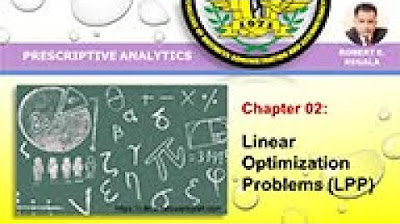Содрогнулся патронный завод в России. Скандальные тайны путинской банды - Пьяных / Асланян
Summary
TLDRThe script delves into a complex tale originating from Klimovsk, near Moscow, where a munitions factory's boiler issues allegedly cause half the city to freeze. Surprisingly, the factory is said to be owned by Jorge Partida-Sumin, a character with a fascinating background. He's portrayed as a Mexican businessman with a deep connection to Russia, involved in various ventures and controversies, including privatizing the factory under dubious circumstances. The narrative weaves through Jorge's intriguing life story, international education, and the peculiarities of Russian munitions production, highlighting the broader implications on local infrastructure and governance. The tale is rich with unexpected turns, including ties to historical figures, international intrigue, and the challenges of modern Russian industry.
Takeaways
- 👨🔧 The narrative begins with a story unfolding from Klimovsk, near Moscow, where a munitions factory's boiler issues cause half the city to freeze.
- 💰 The munitions factory is reportedly owned by Jorge Partiya-Sumin, initially mistaken for a local thug but revealed to be a legitimate, well-educated Mexican businessman.
- 🏡 Jorge's luxurious lifestyle contrasts sharply with the freezing conditions in Klimovsk, highlighted by his possession of a rare Maybach and other extravagant items.
- 🔥 The city's Soviet-era infrastructure, particularly its heating pipes, requires urgent repair to prevent further freeze-outs.
- 📝 Jorge Partiya-Sumin's complex background includes a blend of Russian and Mexican heritage, with connections to the KGB and significant influence in the arms manufacturing industry.
- 🛩️ His education and business ventures span the United States and Italy, mastering multiple languages and establishing himself in the global business arena.
- 🔫 Jorge's involvement in the munitions industry is notable for producing specialized firearms that are highly regarded by Russian special services.
- 📡 The narrative touches on the deregulation of arms manufacturing in Russia, allowing private entities to produce and sell a wide range of firearms and munitions.
- 🛠️ The discussion extends to the broader context of Russian industrial policy, particularly in the defense sector, highlighting the shift towards privatization and the complexities it introduces.
- 📖 A mysterious aspect of Jorge's life emerges with hints at his untimely and unexplained death, raising questions about his legacy and the future of the munitions factory.
Q & A
What incident initiated the narrative described in the transcript?
-The narrative begins with a story about a munitions factory in Klimovsk, near Moscow, facing issues with its boiler room, leading to half the town freezing due to lack of heating.
Who is Jorge Partida-Sumin, and how is he related to the munitions factory?
-Jorge Partida-Sumin is described as the unexpected owner of the munitions factory in Klimovsk. He is a well-educated businessman from Mexico with significant ties to the United States.
What unique item does Jorge own, contrasting with the town's freezing condition?
-Jorge owns a luxurious Maybach Braun Cabriolet, highlighting a stark contrast between his wealth and the town's struggle with freezing conditions.
How did Jorge Partida-Sumin's background contribute to his current status?
-Jorge was born in Moscow as Georgy, adopted by his mother's new husband, a Mexican businessman, moved abroad, educated in the United States, and has ties to the Soviet KGB, which contributed to his complex and influential status.
What led to Jorge Partida-Sumin's involvement in the munitions factory?
-In 2000, Jorge Partida-Sumin privatized the munitions factory, turning it into a successful business producing highly appreciated firearms, including a licensed copy of a Ukrainian pistol.
What historical context is provided about weapons manufacturing and laws in Russia?
-The transcript discusses the evolution of Russian laws on weapons manufacturing, highlighting the transition from state monopoly to private enterprise, allowing for a diverse array of firearms production, including specialized and sniper weapons by private firms.
How does the narrative address the issue of Russian ammunition quality?
-The narrative criticizes the quality of Russian-made ammunition, suggesting that imports are superior. It mentions that when Russian factories use imported components, the quality of ammunition significantly improves.
What role does Jorge Partida-Sumin play in the wider context of Russian private military manufacturing?
-Jorge Partida-Sumin represents a unique figure in Russian private military manufacturing, maintaining independence from state control and illustrating the complexities of the Russian arms industry's privatization.
What controversy surrounds the ownership and management of the munitions factory?
-The narrative reveals a dispute involving the factory's privatization, government attempts to reclaim a share, and the struggle for control between Jorge Partida-Sumin and state-owned entities, highlighting the complex interplay of private and state interests in Russia.
What does the mention of a Maybach and Lenin in the narrative signify?
-The mention of a luxurious Maybach owned by Jorge and a picture of Lenin signifies the contrast between wealth and historical Soviet imagery, reflecting on the complexities and contradictions within Russian society and its elite.
Outlines

This section is available to paid users only. Please upgrade to access this part.
Upgrade NowMindmap

This section is available to paid users only. Please upgrade to access this part.
Upgrade NowKeywords

This section is available to paid users only. Please upgrade to access this part.
Upgrade NowHighlights

This section is available to paid users only. Please upgrade to access this part.
Upgrade NowTranscripts

This section is available to paid users only. Please upgrade to access this part.
Upgrade Now5.0 / 5 (0 votes)





